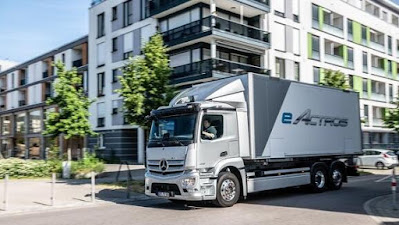Cummins provides fuel cells for European sanitation vehicles
With the gradual implementation of waste sorting and disposal policies in cities such as Shanghai and Beijing, the topic of how to properly handle waste has begun to attract people's attention. And behind this, the power and durability of sanitation vehicles are the basis for garbage collection and transportation. In recent years, waste treatment and management technology has made great progress. Not long ago in Europe, the first batch of fuel cell sanitation vehicles were licensed and put into commercial operation. Cummins further promoted the development of the waste treatment industry by providing fuel cells for sanitation vehicles.
Cummins cooperates with leading European truck( Dongfeng Cummins Parts, Sinotruk parts ) manufacturers, system integrators, waste disposal fleet operators, and hydrogen infrastructure suppliers to develop fuel cell heavy-duty electric sanitation vehicles for the European market. So far, Cummins has provided more than 20 fuel cell power modules for a series of truck manufacturers across Europe. These modules can be called the "engines" of fuel cells.
Cummins recently provided fuel cells to FAUN, a European manufacturer of garbage collection vehicles and sweepers, for use in its electric sanitation vehicle project. According to the project plan, each truck is driven by pure electric power and has zero emissions. The maximum driving distance is 560 kilometers, which is enough to carry multiple collection routes weighing 10 tons of garbage.
In addition to motors and batteries, fuel cells are also used to extend the range of trucks. Each truck is equipped with three fuel cells, the number of which is determined by the route requirements, and the maximum output power of each fuel cell is 30kW. Each truck is equipped with up to six hydrogen tanks, each of which can hold four kilograms of hydrogen. Each vehicle has the same weight as a garbage truck with a traditional engine, which means it has the same payload. These trucks will soon be driving on the roads of many German towns.
Zero emissions and low noise are the advantages of fuel cell technology. These advantages are especially important for urban areas with stricter emission regulations and denser populations. This technology has been successfully applied to garbage trucks and can provide strong support for the upgrade of other municipal vehicles. For example, in buses, the current battery technology cannot meet the technical requirements of heavy vehicles and long-distance commuting, while hydrogen fuel cells can well make up for this technical shortcoming.
With the support of Cummins technology, so far, more than 2,000 fuel cell systems have been put into use, and the waste treatment methods have become cleaner. Looking forward to the near future, this technology can be effectively applied in a wider range of countries and regions.



Comments
Post a Comment